Yalta
It is unlikely to avoid cliches like “Famous Soviet resort” in the story about Yalta, because Yalta is a famous Soviet resort.
There is nothing to do in Yalta except for relaxing. In Yalta itself, that is. But there are things to see in the Yalta district, such as swallows’ nests. The main attractions are the Livadia Palace where the meeting of Stalin, Churchill, and Roosevelt took place, as well as the Massandra wine factory. Of course, we won’t go to them.
Yalta is a deceptive city. Hotels near the sea are very expensive, but prices can be five times lower just one kilometer from the shore. The deception is that this kilometer goes uphill, and there is no normal transportation in Yalta. Buses to this hill almost never go, minibusses are so overcrowded that they tilt to the side, a taxi costs around five hundred rubles one way, and the traffic jams are so bad that even Los Angeles would envy them. So it turns out that it’s cheaper to take a room twice as expensive but by the sea.
The upper part of Yalta is quite terrible.

Panel houses, new buildings, piles of scrap metal, and a huge number of rusty garages occupy the entire Yalta slope.

People here live poorly. The fact of living in the best resort city of the former USSR hardly brightens up the garbage piles under their windows.
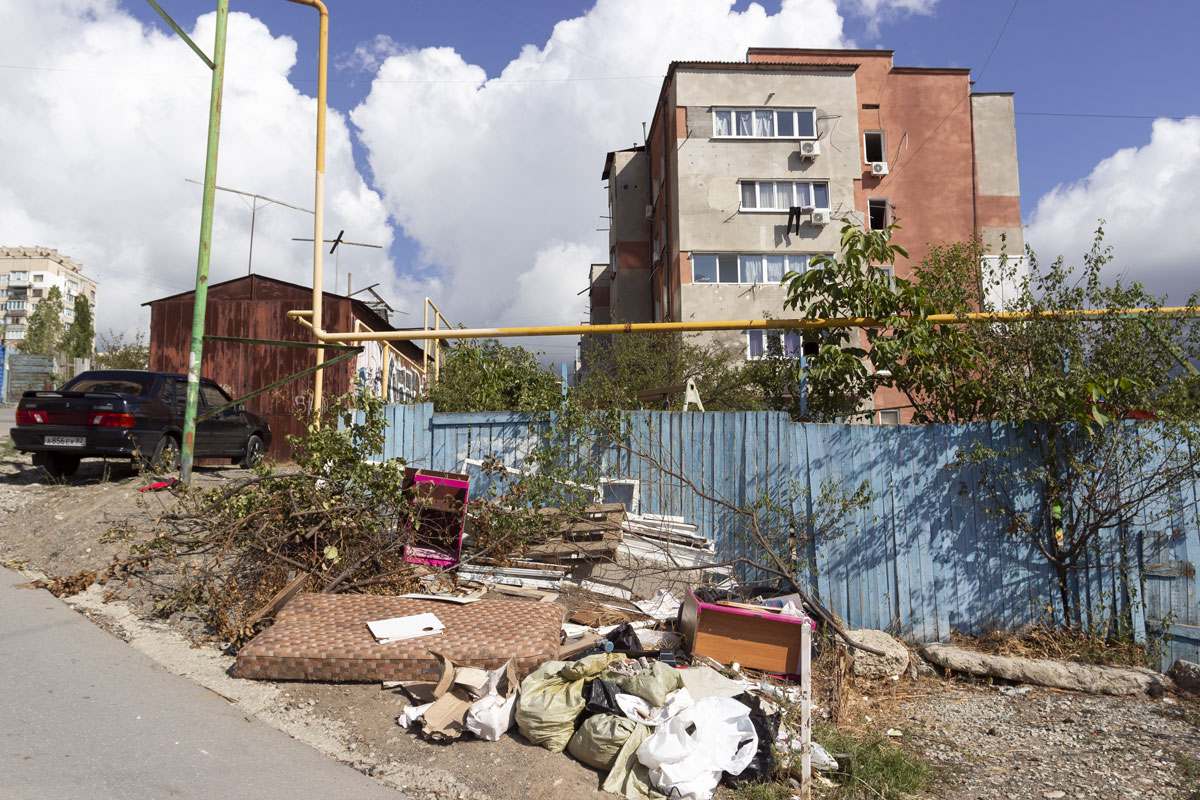
Or maybe it does brighten things up because every time the Black Sea appears on the horizon, all thoughts freeze.
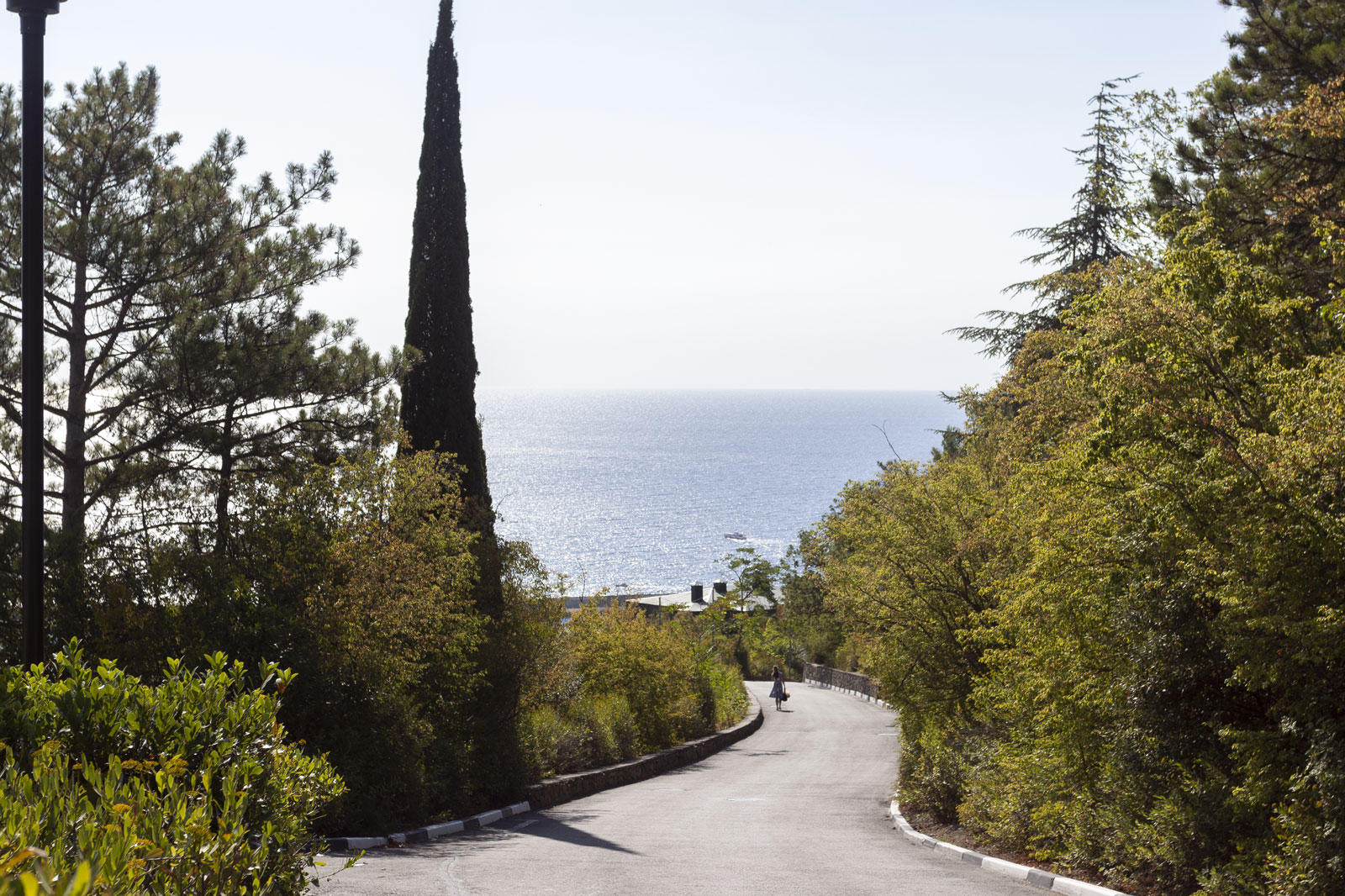
Yalta is beautiful. Even a person would find it difficult to spoil such beauty.
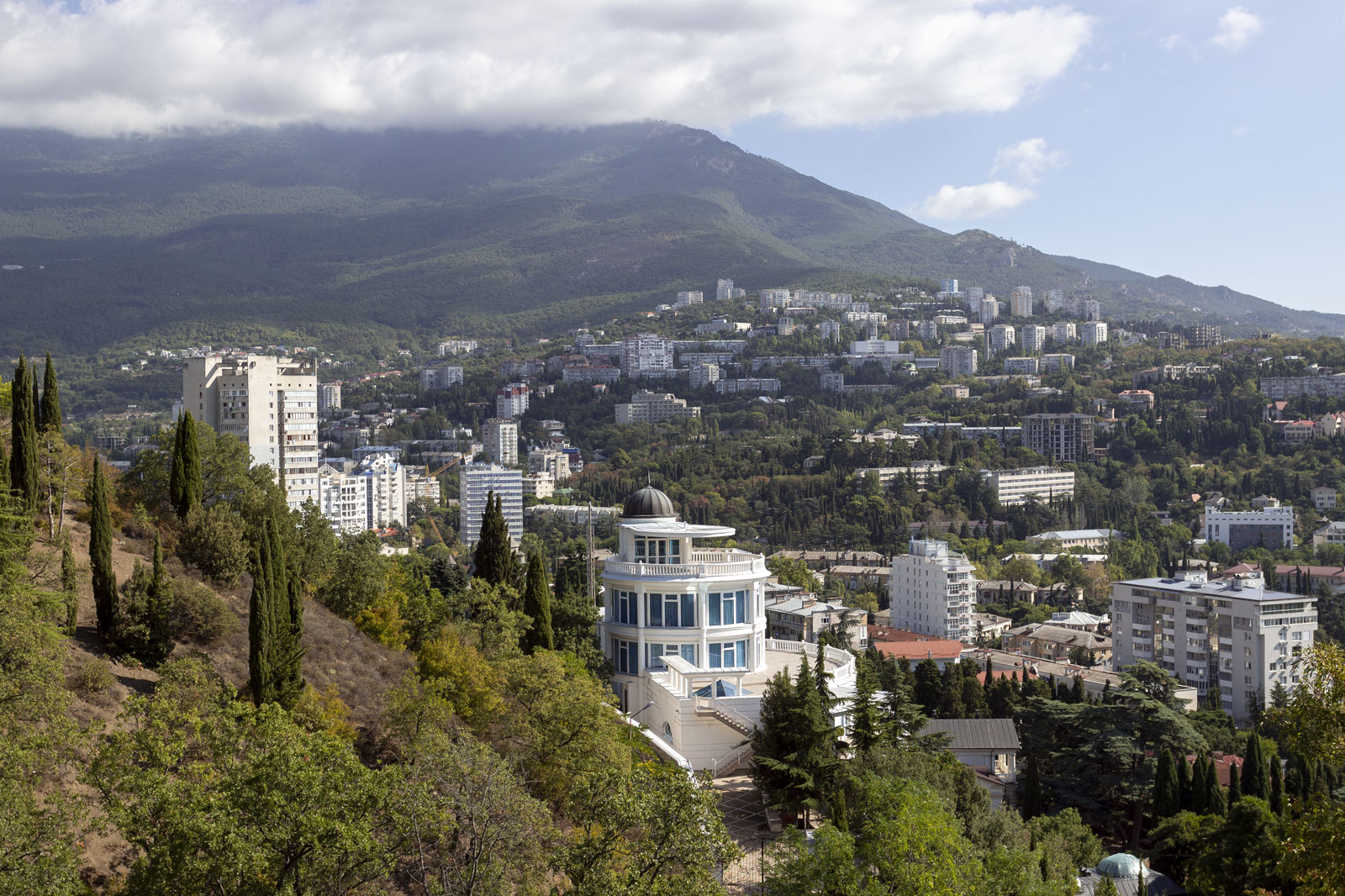
There is a road going down the hill with steps along it. This staircase seems endless, and the steps are uneven: sometimes you need one step, sometimes two. An especially “enjoyable” experience is walking down this staircase after a walk in the mountains when your legs hurt much more on the descent than on the ascent.
The second problem of Yalta, like that of the whole of Crimea, is poor lighting. Yalta is illuminated much better than Simferopol, where there is no light at all at night. But still, it is poorly lit. Here’s what the same place looks like at night: pitch darkness from which cars suddenly emerge.
This descent cannot be avoided. You can try to take a taxi, but it is very expensive, and the traffic jams on the roads are terrible. Buses and minibusses at the top of the hill run rarely and are always overcrowded.
There is another, secret transportation — the old cable car Yalta-Gorka, which goes almost from the beach to the very top of the hill.
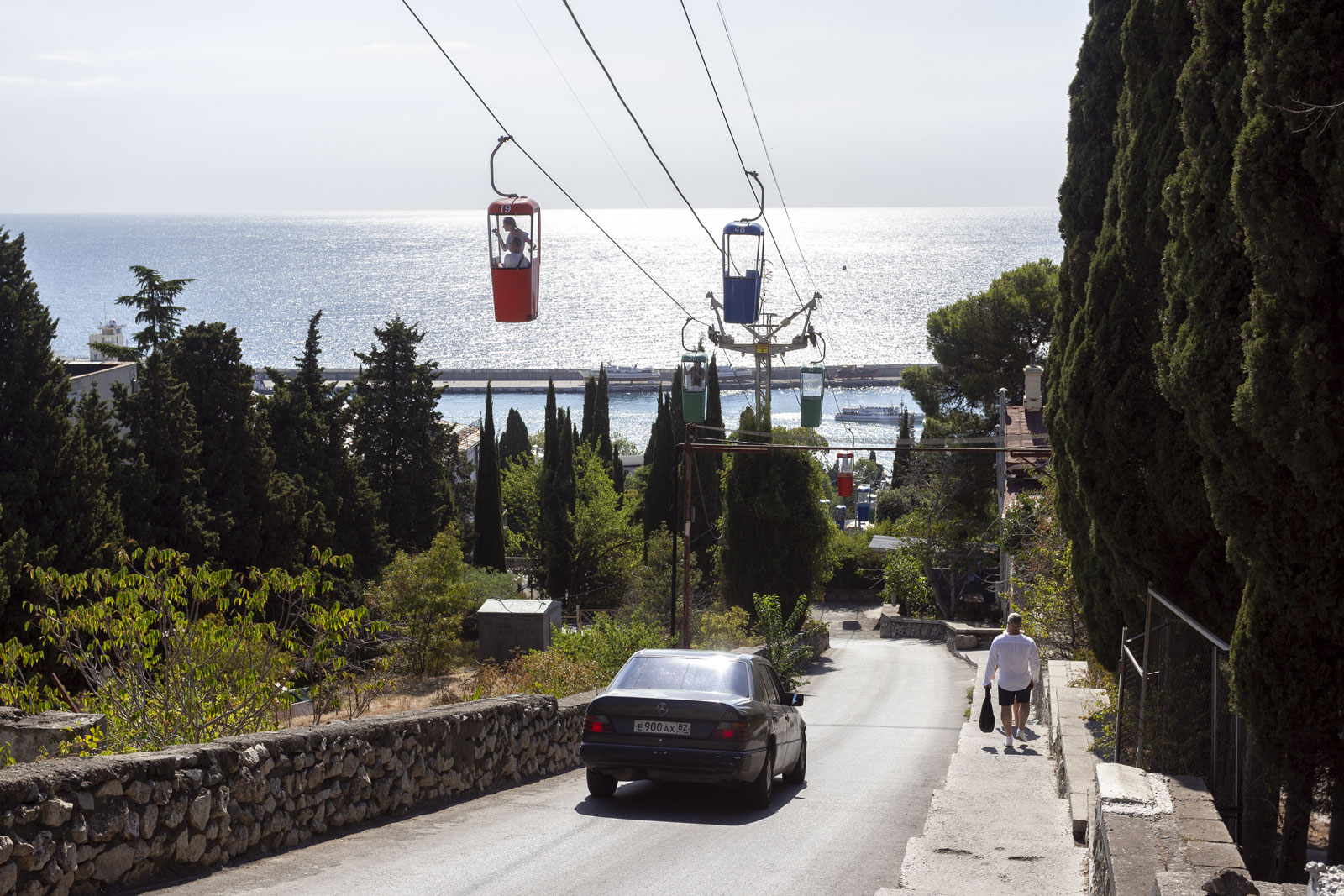
That’s really convenient. The road goes straight, and there are no traffic jams here. Unfortunately, the cost for a round trip is 400 rubles, which makes this method completely useless again.

The cable car was opened in 1967, and it still has Soviet cabins of three colors hanging on it: red, blue, and green. Perhaps this is the best decoration of Yalta from the Soviet era. The true spirit of the time.
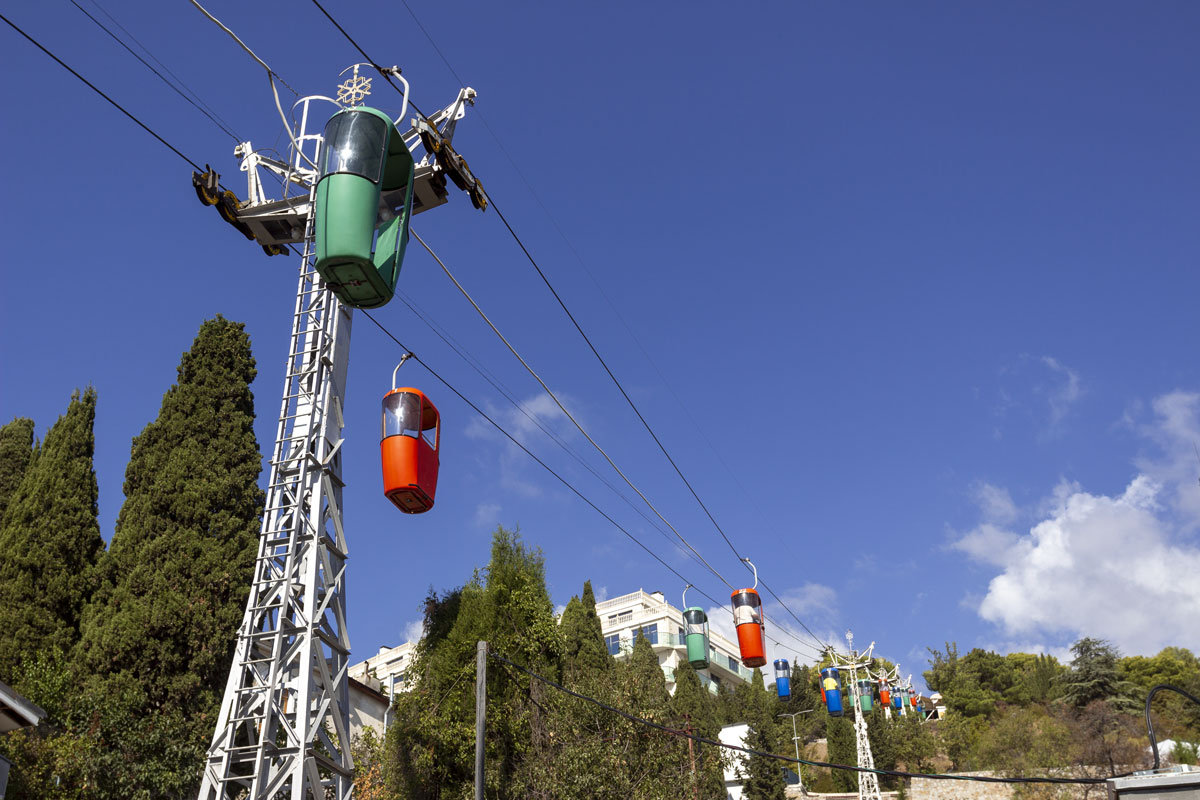
The road passes over dachas and residential houses.
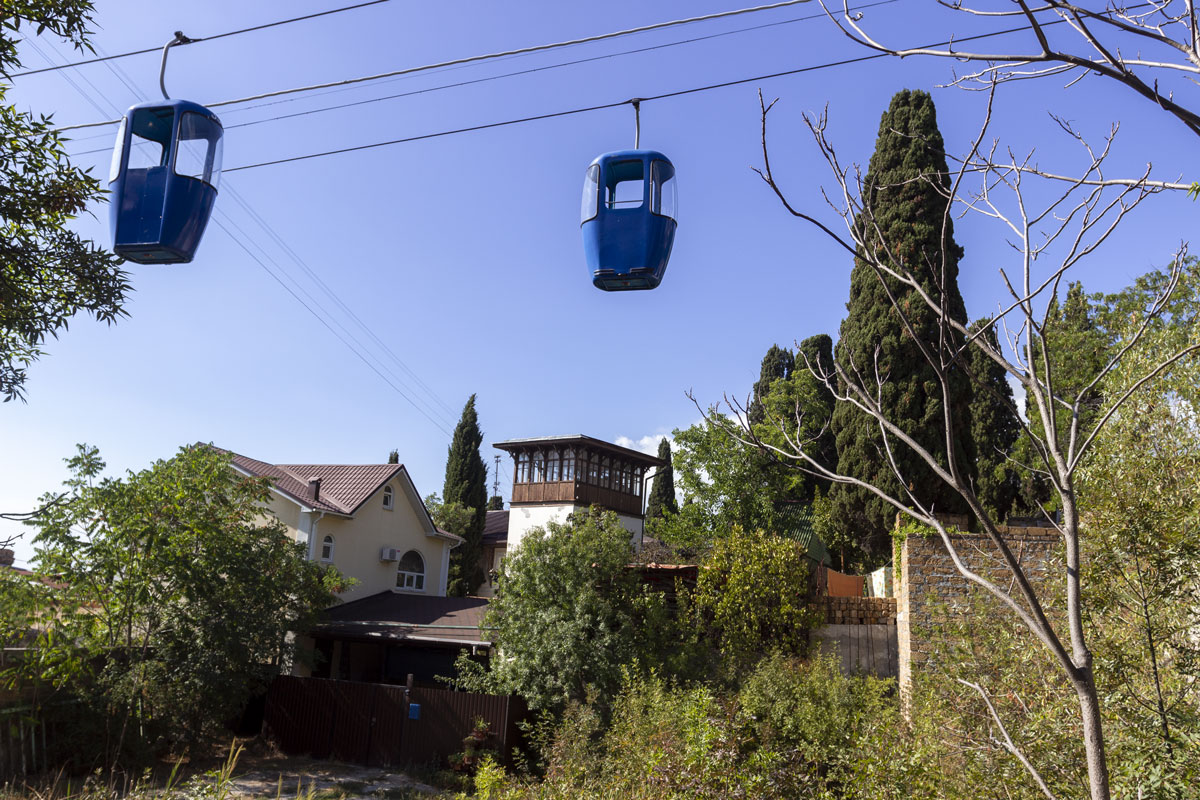
At night, the road looks absolutely cosmic. Nothing is visible around, complete darkness. The masts are illuminated by lights, and when the cabins pass by the lights, they resemble spaceships emerging from the darkness.
The cable car leads to the most boring place in Yalta — the embankment.

There is absolutely nothing and nothing to do on the Yalta embankment. The place is pleasant: trees, flowers, sea, everything is clean. It’s just boring here. Along the shore, there are endless expensive hotels. The exits from them lead straight onto a long avenue, then there is a narrow strip of free city beach with pebbles and no amenities, and then the sea begins.
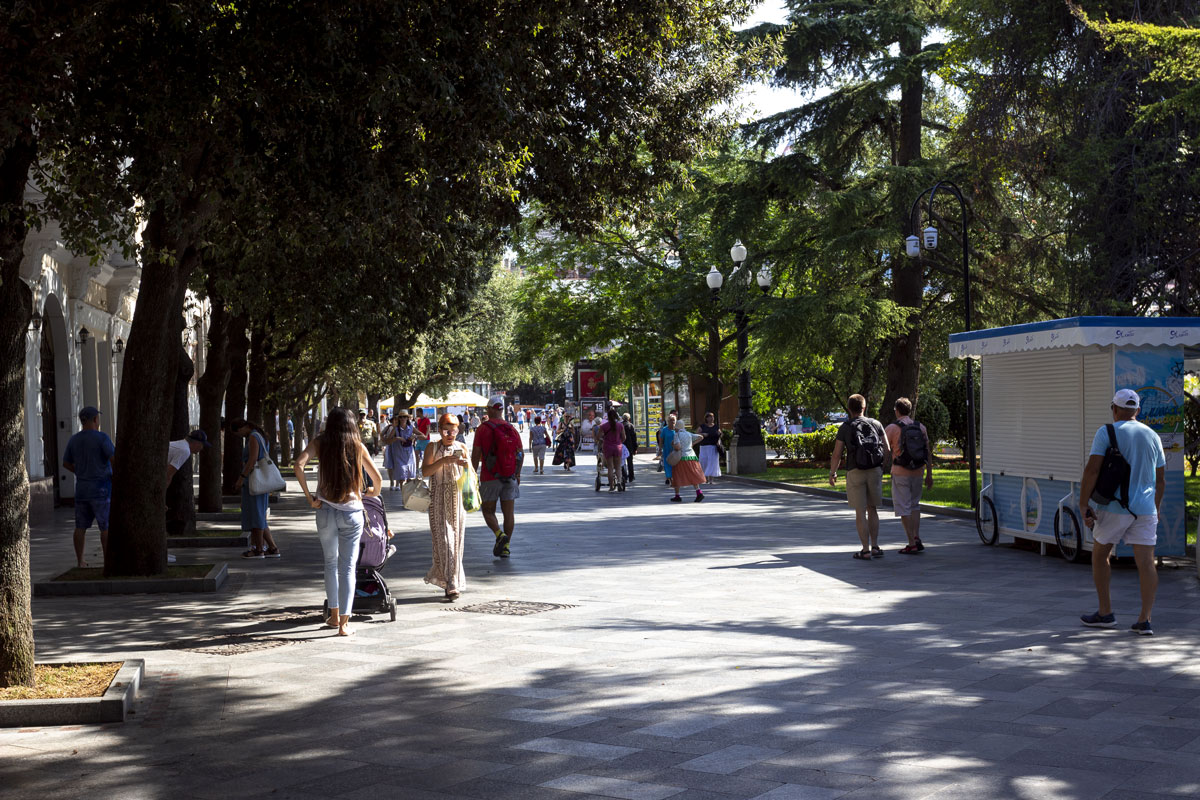
Sometimes you can come across a new building that imitates the warm and cozy Soviet style.
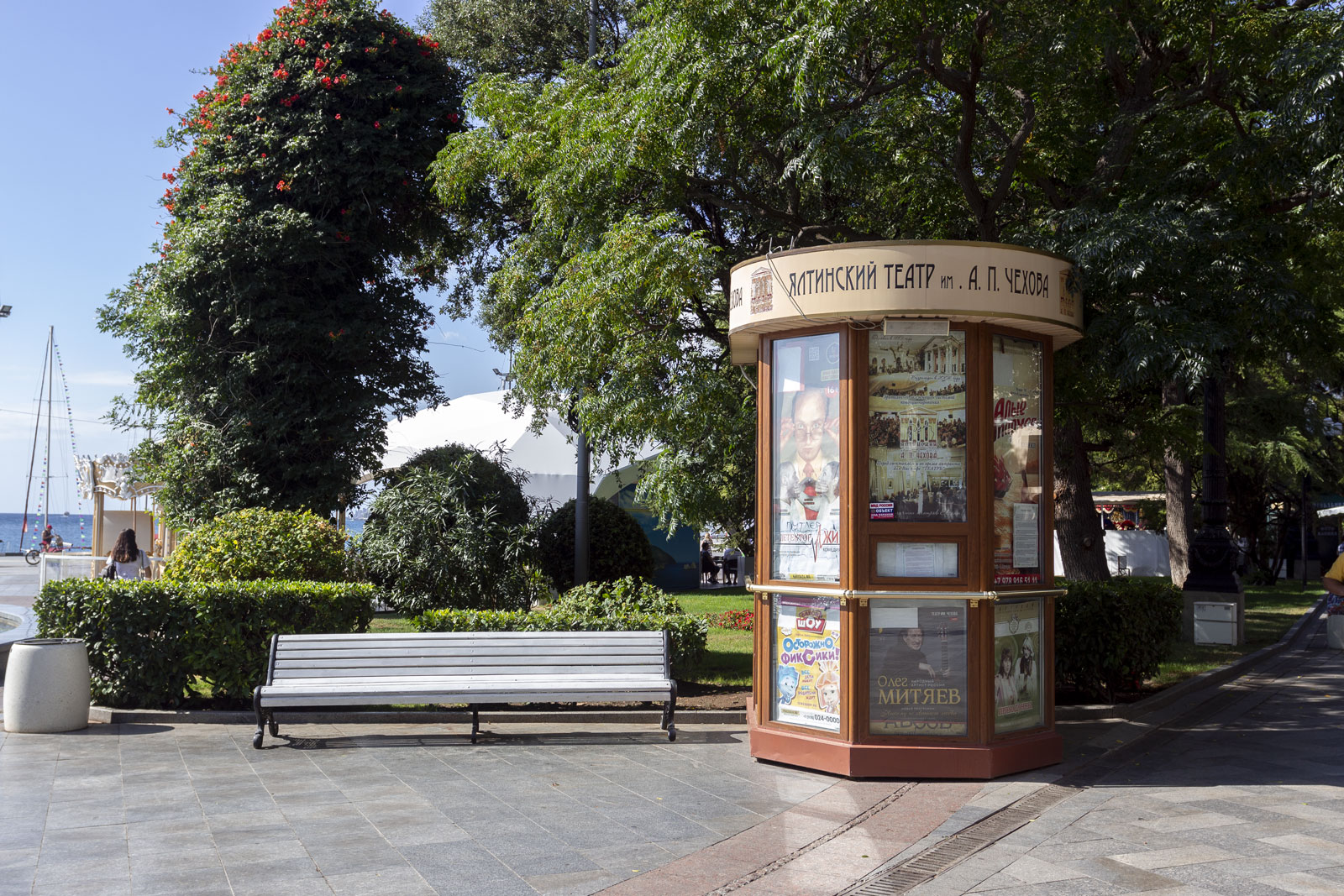
There is a lonely Lenin statue. People take pictures not with him, but with some incomprehensible thing left over from New Year’s.
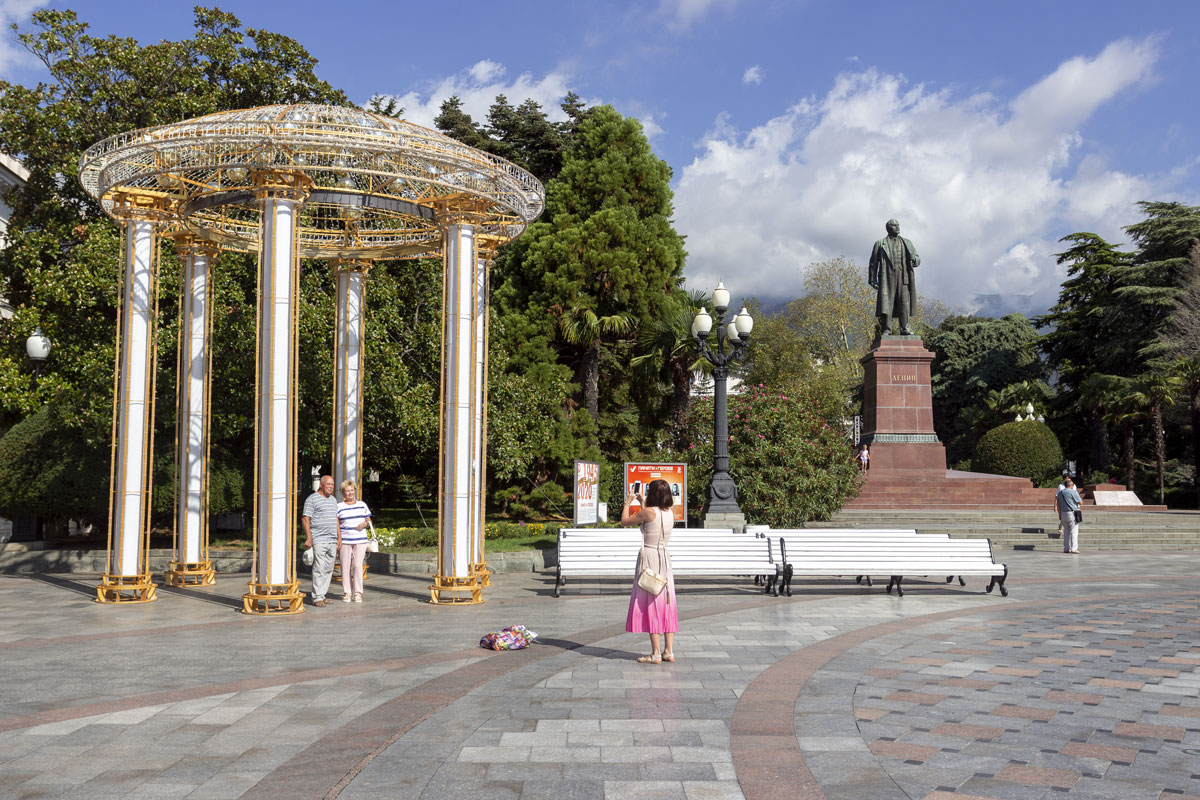
At night, the embankment is slightly less dull. Street performers come out, primitive attractions are launched, neon lights turn on. If you get drunk, it will be good here.
A small part of the old town has been preserved in Yalta. You can recognize it by the mansion of Count Mordvinov, which has stood here since the beginning of the 20th century.
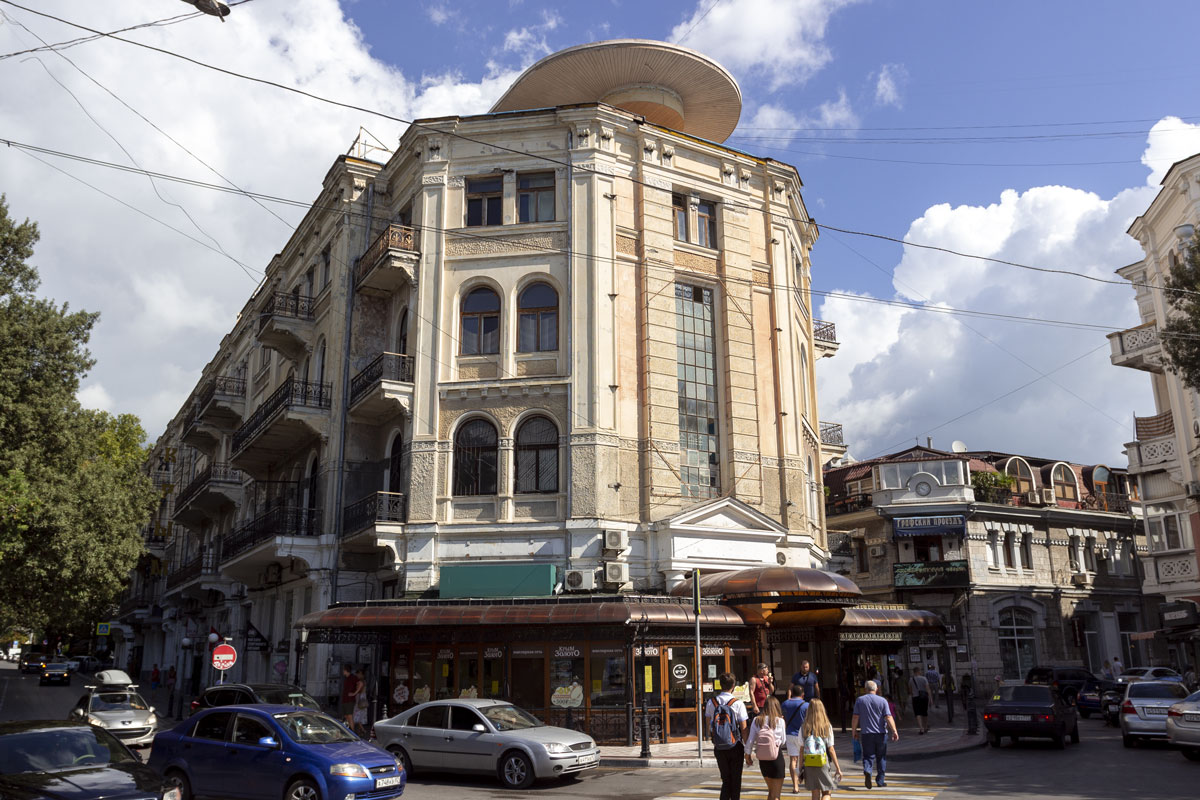
The narrow corner next to this house is the most beautiful part of Yalta, where at least a little bit of history has been preserved.
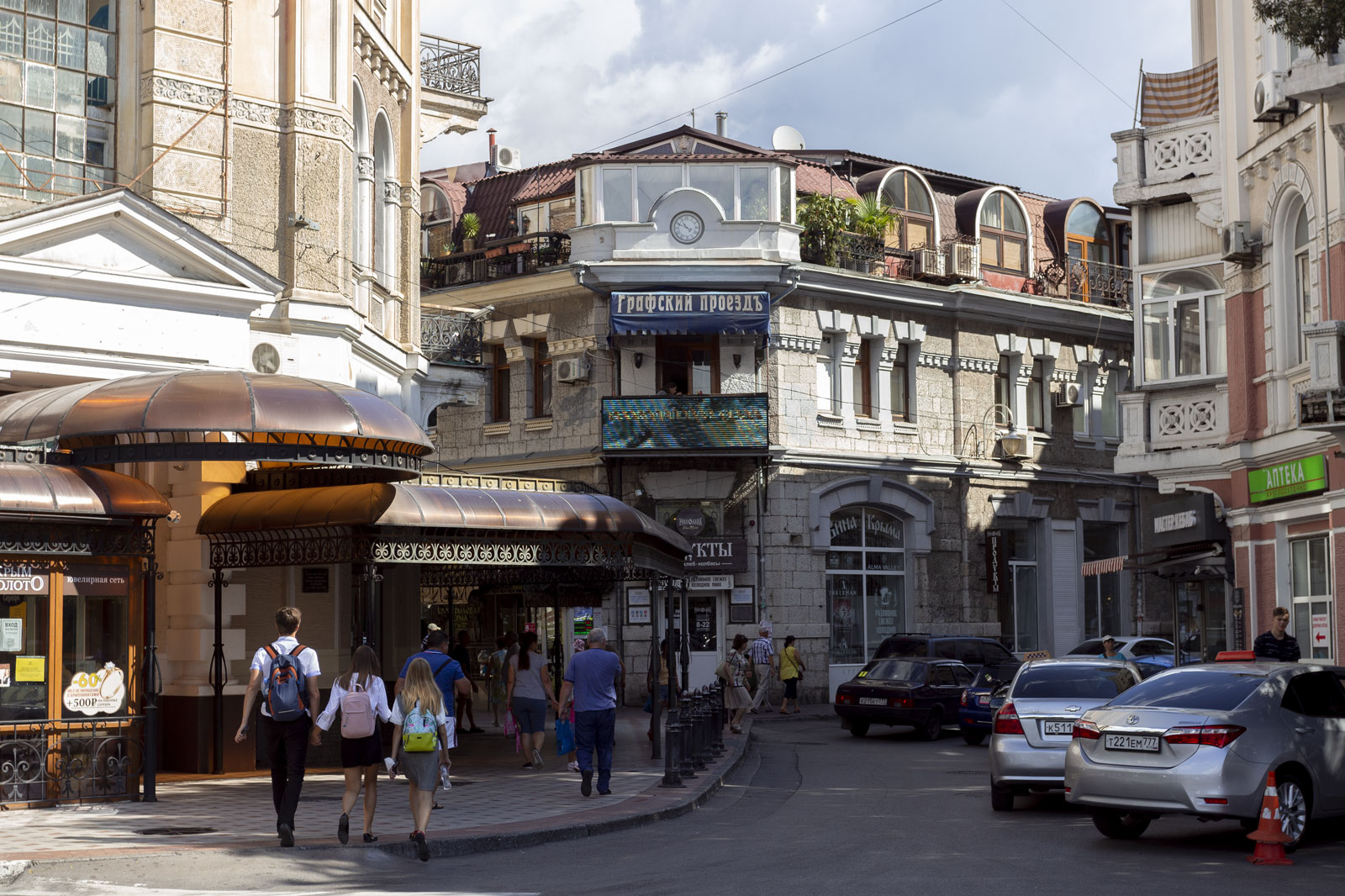
The balconies and alleys of old Yalta once again resemble the East.
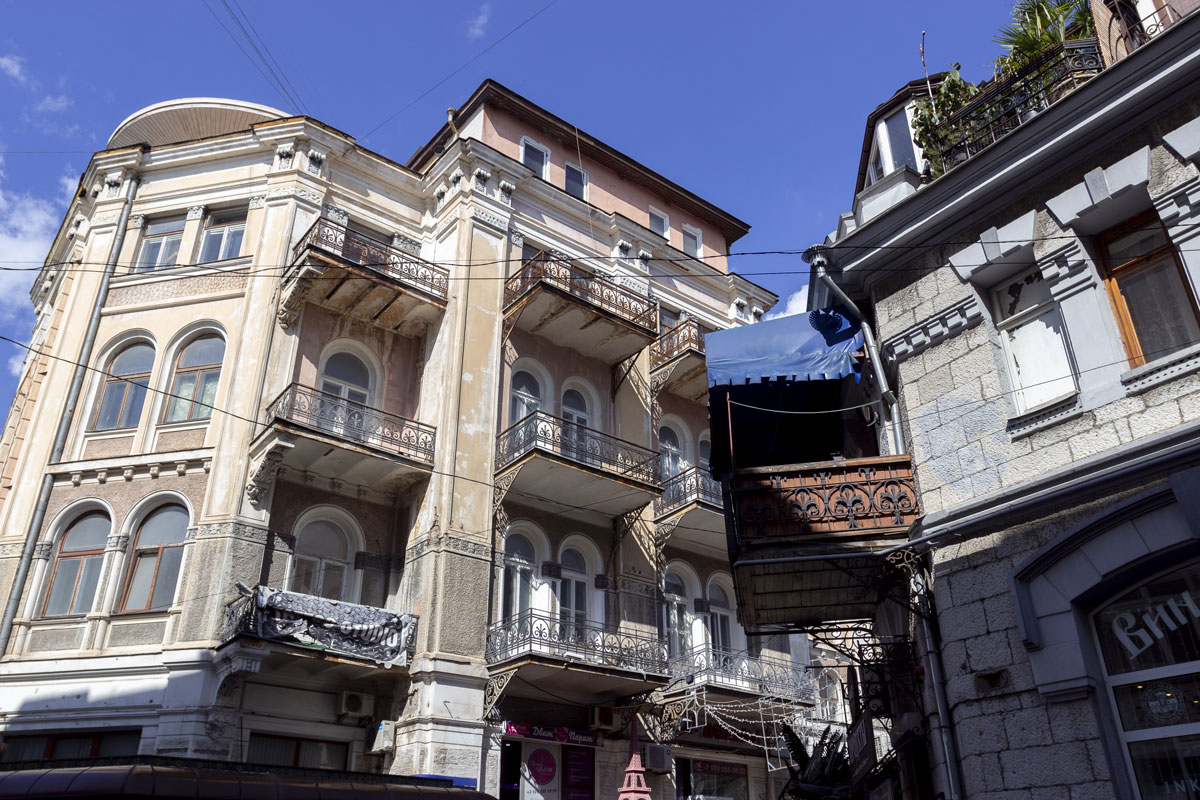
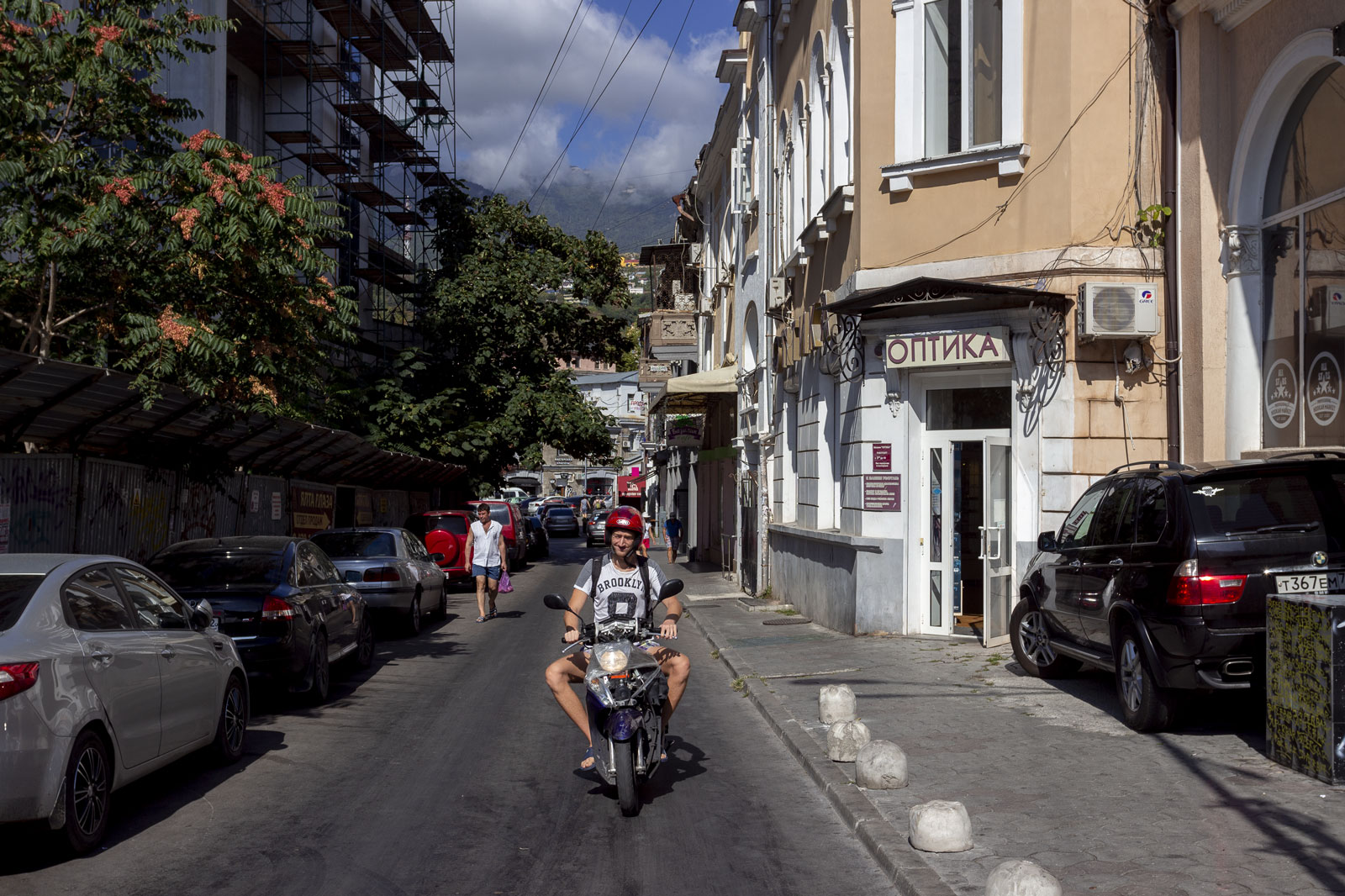
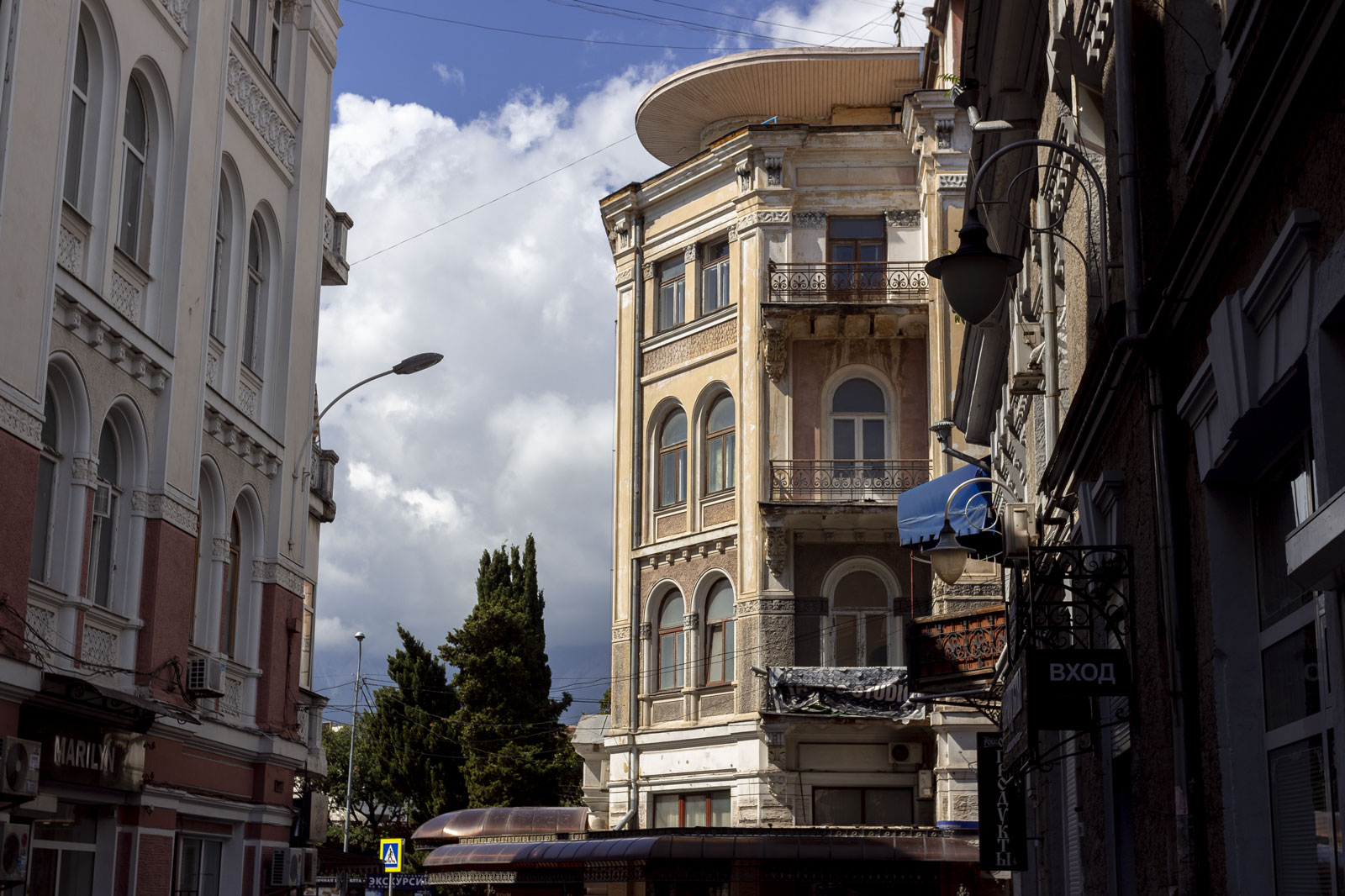
From the old town, there is a beautiful view of the mountains.


The atmosphere is not spoiled even by the makeshift parking lot and trash cans near new buildings. After all, there are also problems with parking and garbage in the East.
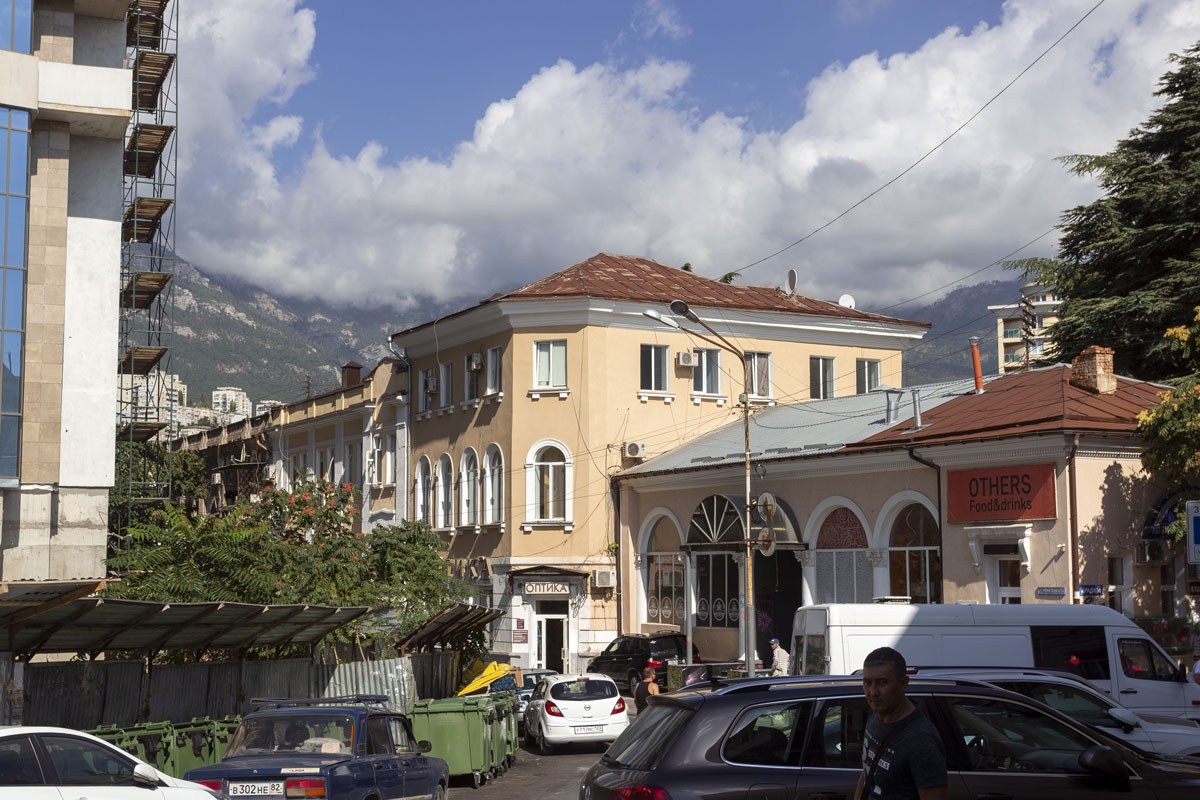
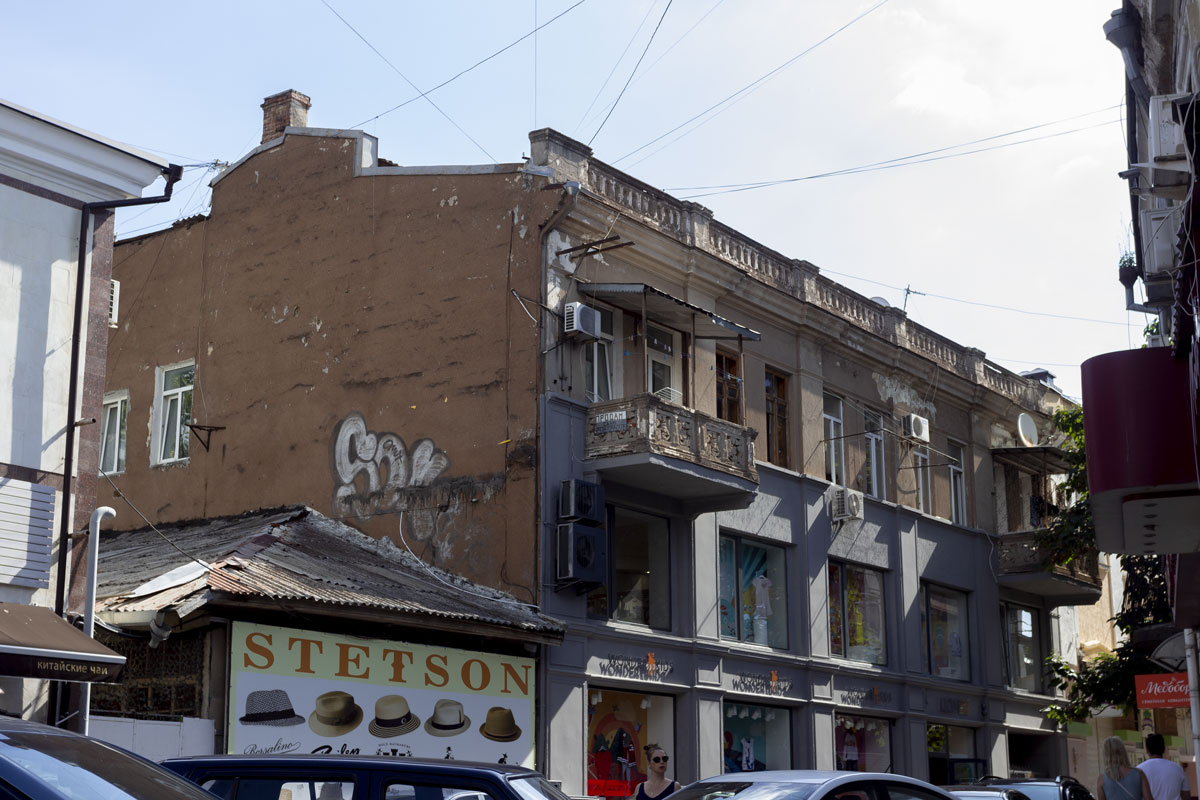
The old town is the only place in Yalta where there are normal cafes, not trendy fast-food joints. For example, at the cafe “Salam Aleikum,” they serve excellent Syrian-style coffee with rahat-loukoum and nuts.
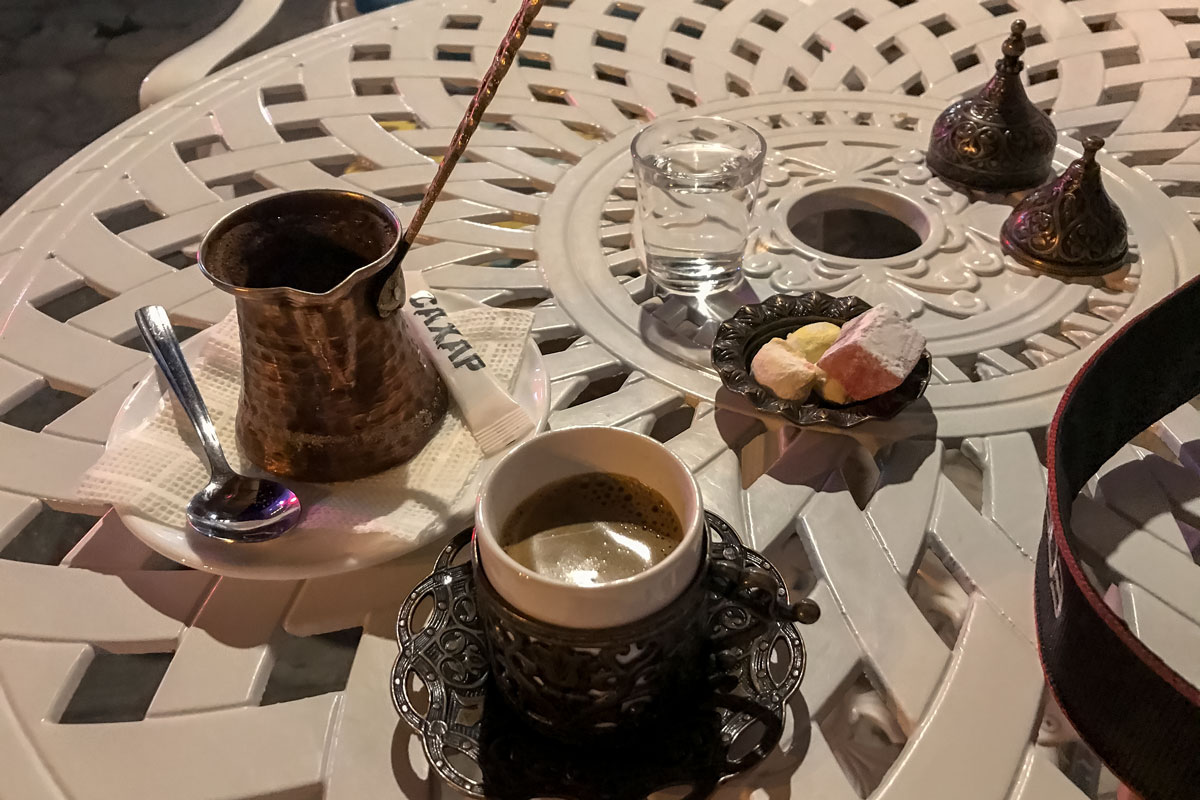
The best beach in Yalta, Massandra Beach, is hidden behind the old town. I emphasize: the best beach in the city of Yalta, not the best beach in the Yalta region. The city beaches cannot be compared to the beaches of sanatoriums and vacation homes, such as Ai-Danil.
You can get to Massandra Beach by walking through the narrow streets behind the St. Nicholas Chapel. Here, the historical buildings are still intact, and everything around is occupied by makeshift trade.
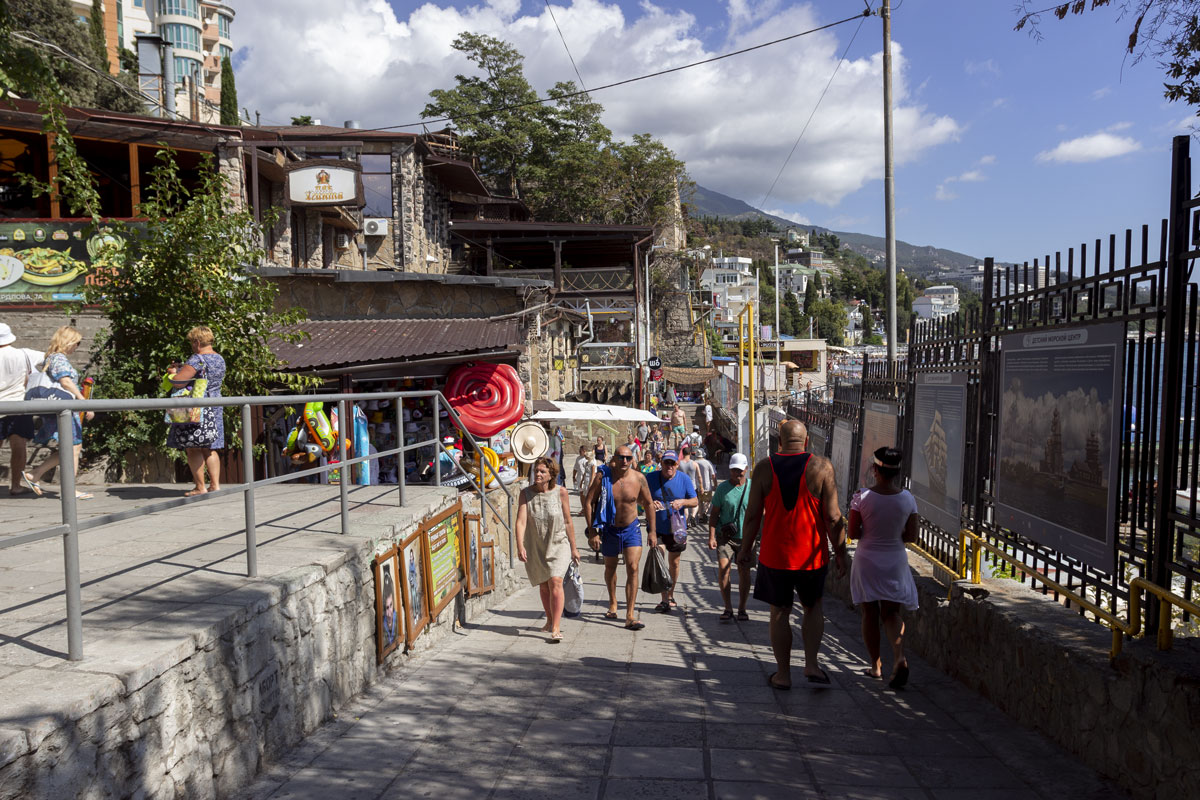
The beach is at sea level.

From the piers, you can see all of Yalta, along with the mountains. It’s cool.

The beach itself is free, but you have to pay for the sun loungers.
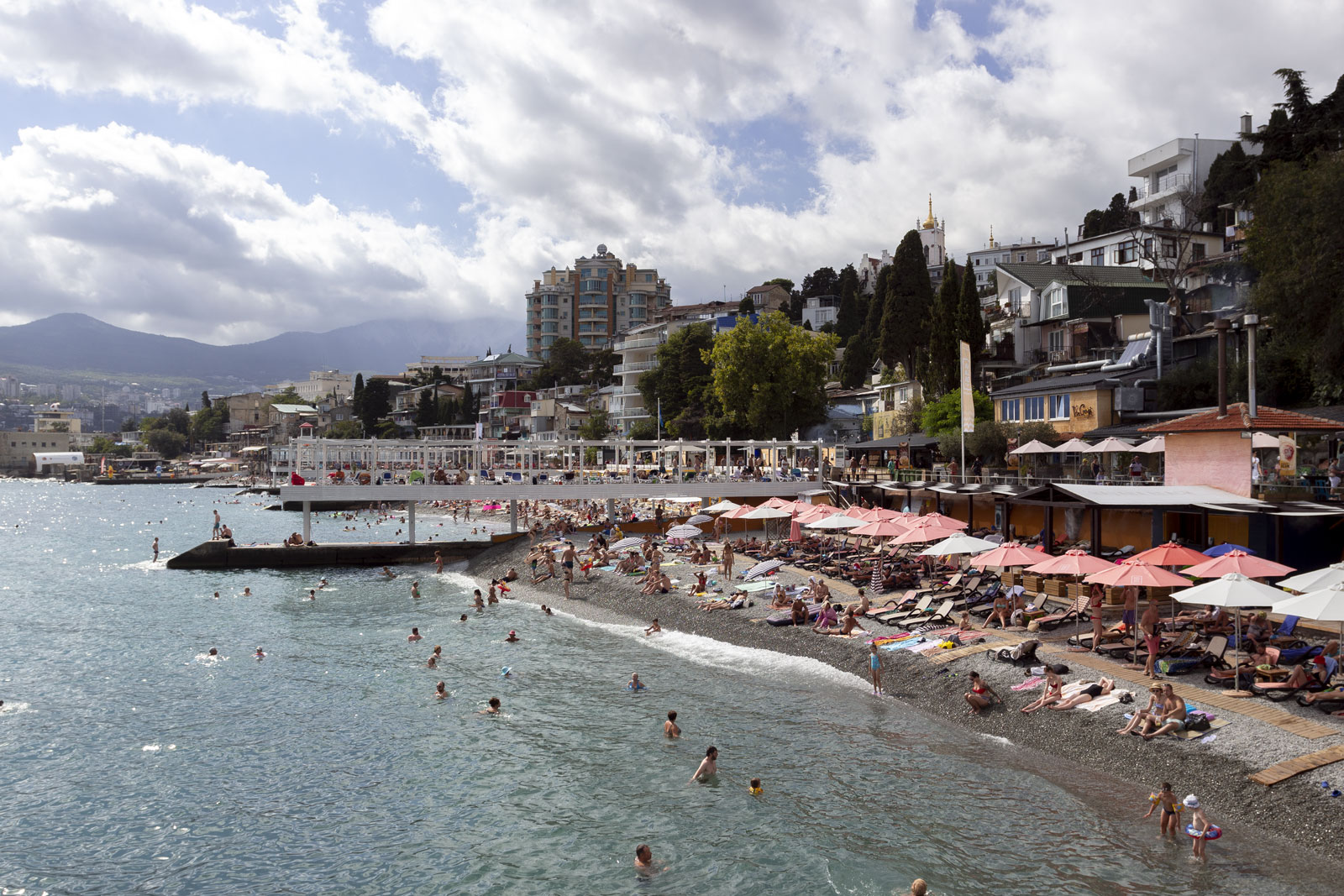


Oh, all right, that’s it, I’m going to relax.


